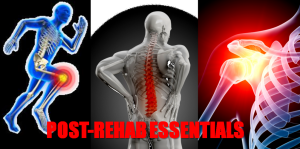Can You Train Through an Injury?
In answer to the above question, the answer is simply and resoundingly YES!!! And it doesn’t mean using nothing but pink dumbbells and bands all day long (only part of the day). Let’s start off with a graphic example.
I worked with a group of high school girl soccer players a few summers ago to do their strength and conditioning. It was on the field, so we had to do a lot of body weight
exercises, running, metabolic conditioning, running, core work, combat scenarios, running, plus play a little soccer in between. After one particularly hard training session, the following day everyone came in complaining of shin splints from all the running the day before (note: if soccer players can’t run, they can’t play soccer all that well). Of the 17 active players, 14 complained of some form of shin pain and wanted to get out
of the runs. So being me, I said
“Okay, then while everyone else runs their perimeters, I want you to do 50 air squats, 20 pushups, 20 back rolls to standing, and 20 stepback lunges on each leg before they return.”
Needless to say that’s not a lot of time, and as a result everyone in the no-run group had to essentially murder their legs to complete the series, but most of them did. Following that set, I asked if they still had shin splints and MIRACULOUSLY!!!! Only 3 of the 14 still said they had something resembling shin splints!!
I’m not saying this to prove how much of a prick I am to train with (hint: I totally am), but to give an example of how you can get a kick-ass workout, even when you’re feeling some form of pain or dysfunction.
The first step to working through pain is understanding what lead to the pain in the first place, and what may help to reduce the problem. In the above instance, the shin splints were caused by the impact forces going through the legs during running (whether it was tibialis anterior fatigue, microtears to the interosseous membrane, microfractures to the tibia, or simply dead tired legs, we’ll never know). Because the mechanism of running and impact created the problem, the solution was to make them hate life while not
involving any impact through the legs, hence the air squats and stepback lunges instead of step-forward lunges.
Let’s say I’m working with someone complaining of rotator cuff issues, and they’re standing in front of me looking like Mr. Burns, and hunched over and fingers tented and stuff.
If I were to only address the rotator cuff and have him perform endless sets of external rotation with a band, he would get more bored and want to gouge his eyes out faster than I’m sure Kris Humphries did around day 40. Instead of focusing only on the rotator cuff, why not look at getting his T-spine into more extension, work on getting his scapula to retract and depress to correct the potential imbalance between his upper traps and lower traps, and work on breathing mechanics to prevent him from collapsing back into
flexion? Sounds like a plan. If he’s hunched like crazy, he could use some re-training on getting his lats to fire CORRECTLY, meaning he feels it all the way down to his pelvis. Meanwhile, on the other side of town, his legs seem to be fine, so why not blast them with some front squats, goblet squats, split squats, 1-leg squats, deadlifts, carries, and all manner of fun, as long as he isn’t put into external rotation and abduction, avoids pushing like Ndamukong Suh avoids anger management class, and as long as he keeps his posture upright and bulletproof.
There. I literally just solved 90% of the rotator cuff problems you will ever see in the gym, and even gave you the program for it. Aren’t you glad you checked this out today??
Now I’ve been fortunate enough to have injured almost every part of my body. I say fortunate because it’s given me a unique perspective on how much injuries suck and how frustrating they can be. I’ve sprained both ankles (twice REALLY bad), had patellar tendinitis in both knees (garbage term), dislocated my hip from my spine while bulging three lumbar discs…
….torn my left rotator cuff in a bench press contest, had a few concussions, sprained both ankles (twice REALLY bad), had patellar……what was I talking about again??
Oh come on, laugh at a concussion joke! Geez, where’s Sidney Crosby when you need him?
So because of all these injuries, I’ve had to learn what to do and what NOT to do, plus working with hundreds of injured clients who had varying levels of function and pain. I know it can be a pain in the ass to try to figure out how to get better on your own, which is why I developed the Post Rehab Essentials resource to help guide you through the process. It’s intended for personal trainers who want to work with a client who may have an injury, as well as for the average fitness buff who may want to learn some new info on what to do and not do with their own injuries, and hopefully find new ways to prevent injuries from happening at all.
Post Rehab Essentials is on sale until December 9th at midnight est, so pick up a copy while it’s still good and cheap and get your learn on this holiday season. It would make a great gift for the trainer or muscle head on your life as well, so maybe even get two!!
Pick up your copy now!!!

11 Responses to Can You Train Through an Injury?